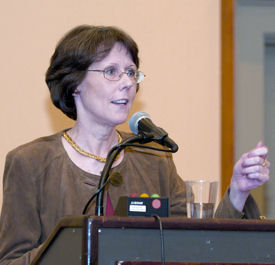Primary care gains ground but pay reform still up in the air
Politicians acknowledge needing more primary care physicians, but paying for it requires support from elected officials and from the College.
Just about everyone these days is touting the importance of general internists and other primary care physicians.
President Obama has said that we need more primary care physicians. Sen. Max Baucus (D-MT), chair of the Senate Finance Committee, calls primary care the “keystone” of a high performance health care system. He is planning to include payment reforms to support primary care in the comprehensive health reform legislation he hopes to get through his committee in June.
Sen. Charles Grassley (R-MT), the ranking Republican on the Senate Finance Committee, notes that “We've upset the whole practice of medicine to such a point that we don't have many primary care givers. That has driven up the cost of medicine itself with emphasis on specialists and it has reduced the quality of delivery, particularly in rural areas.” (Kaiser Family Foundation, Health Reform Newsmaker Series.
A recent survey of health care opinion leaders by the Commonwealth Fund finds that “increasing supply of primary care physicians though payment reform” is seen by 61% of respondents as being “most effective in reducing growth of health care costs.”
Although primary care is in the enviable position of being favored in public policy circles, obstacles to overcome include deciding who will pay for primary care and how.
The politics of payment
Congress has passed a budget resolution that sets the parameters for funding health care reform and other governmental programs and priorities. The resolution calls for Medicare payment reforms to “improve payment accuracy to encourage efficient use of resources and ensure that primary care receives appropriate compensation” and “encourage physicians to train in primary care residencies and ensure an adequate supply of residents and physicians.”
The catch, though, is that the resolution directs that such reforms be implemented in a budget neutral manner, meaning that increased payment to general internists and other primary care physicians would need to be offset by savings or cuts somewhere else.
Predictably, non-primary care physician specialties oppose redistribution of dollars from their specialties to primary care. It also seems unlikely that the other major health care stakeholders, insurance plans, hospitals or drug or device manufacturers, will go along.
Even within internal medicine, payment reform that involves taking money from subspecialists to pay general internists will likely prove to be divisive.
All of this could be avoided if Congress instead decided to invest more money in primary care, as the College has recommended. Studies show that primary care consistently produces better outcomes at lower cost, with much of the savings coming from reduced hospital admissions paid for under Medicare Part A. The budget resolution, though, will make it much harder to get Congress to free up more money for primary care without goring someone else's ox.
Deciding what to pay
The other challenge is deciding whether Congress should put most of the money into increasing payments to primary care physicians under the existing fee-for-service payment system, or instead offer more money to primary care physicians if they are willing to accept more accountability for the quality and effectiveness of care provided.
The argument for increasing fee-for-service (FFS) payments is straightforward: primary care physicians are paid far less under FFS than other specialists and most doctors are paid under FFS, so the fastest and most effective way to help primary care is to increase Medicare FFS payments.
The argument against increasing FFS payments to primary care is that this would dump more money into a dysfunctional payment system that rewards doctors for the volume, not value, of care provided. Instead, the argument goes, Congress should give primary care doctors more money only if they are willing to organize their care to get better value (quality and effectiveness), such as through the patient-centered medical home.
Even the most promising value-based payment models are largely unproven, and may be years away from being widely adopted. Scaling such models to smaller physician practices is particularly challenging. What works in the Geisinger Clinic may not readily apply to the practices of five or fewer physicians, which is where 80% of all patient visits occur.
ACP has proposed that Congress pursue both tracks. There is an urgent need to fund new payment models that hold the promise of increasing payment for patient-centered and team based care managed by general internists and other primary care physicians who are able and willing to accept more accountability for the quality and effectiveness of care provided.
Over the long-term, such reforms may be more effective than continuing to pay internists on a piecemeal basis for the number of visits they can squeeze into a busy day. At the same time, it is imperative that Congress take immediate steps to increase traditional FFS payments to primary care, even as other payment models are being designed and tested.
Where do we go from here?
That primary care finally is getting the attention it deserves from policymakers is good news. At the same time, no one should believe that restructuring payment policies to support primary care will be easy. Deciding who will pay for primary care, and how it should be paid, are daunting policy and political challenges. But such challenges can be overcome with committed leadership from President Obama and from Congress—and from ACP itself.




